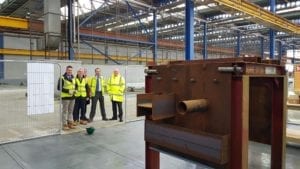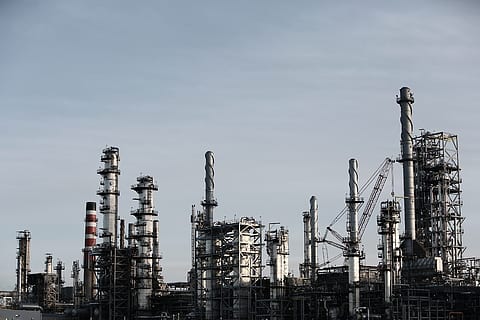The cart is empty!

Meet the Corrosion Specialist – This Month, David Horrocks (FICorr)
11 Questions in 11 Minutes
It’s that time again when we get to ‘Meet the Corrosion Specialist’. This month we spoke with David Horrocks, Materials Engineer at BAM Nuttall Ltd., Chairman PDTC at the Institute of Corrosion, and Chairman of the training committee at NHSS19a Highways England. David is also a Fellow of ICorr.
As ever, we posed 11 questions for David to answer, encouraging him to invite us into his professional and private life. Here’s what he had to say.
1. What did you aspire to be when you were younger?
A painter and decorator. My father said I needed to ‘get a trade’ when I left school. Things sort of went to plan as Dad wanted, but I left comprehensive school early and failed my mock exams! Luckily a local painting and decorating company, T. Taziker & Sons, was advertising for apprentices in Farnworth, Bolton. I was taken on, and attended Bolton College on Manchester Road one day each week. After four years, I had become a fully-fledged painter and decorator through the prestigious City & Guilds training scheme.
2. So how did you end up as a corrosion specialist?
The painter and decorator life was superb. Hotel decoration, hospitals, wallpaper hanging, specialist spraying techniques, and high-end finishing… but the company wanted to utilise my skills not only to broaden my field of work but give me more managerial roles such as ‘foreman’, or ‘supervisor’.
As a young kid this was somewhat daunting, but I grabbed each opportunity with both hands. This led to new ventures in the industrial painting world. Blast cleaning and painting old steel structures – including the Anderton Boat Lift in Cheshire and Tees Newport Bridge Middlesbrough – were milestones in a working career that was starting to showcase my passion for corrosion protection.
Inspection and management of projects really did take my career to another level, and gave me the platform to push for quality excellence in corrosion protection of steel structures.
3. What was your first job like?
My first job was nothing to do with corrosion, painting, inspection, or management. I was a paperboy. Then I worked on the old electric milk float delivering milk!
In terms of my first job in corrosion mitigation, I suppose I realised that blasting old paint and rust off a very old bridge and spraying a new paint system on it that would protect it for a number of years to come was pretty cool.
4. You decided to stick with blasting and painting, management and supervision. Why? Did you think this career was going somewhere?
My career progressed from blaster/sprayer to supervisor, manager, and inspector. I trained through ICorr and BGAS CSWIP and eventually gained ICorr Level 3.
Following a successful career in contracting from 1981-2006, I joined BAM Nuttall Ltd. as a Rail Managing Agent managing rail and highways infrastructure works. 2006-2020 has been spent helping industry in terms of corrosion control and how we manage this.
5. What have yo u enjoyed most about your career in corrosion?
u enjoyed most about your career in corrosion?
I suppose my biggest and most passionate enjoyment was the role I played in steering a new trailblazer industrial coating applicator apprenticeship scheme. This was a labour-intensive, three-year process, but every minute spent on this was worth the present-day fact that new apprentices are emerging!
(You can read about David’s part in the ICAA (Industrial Coatings Applicator Apprenticeship) programme here.)
6. What career advice would you give to a young corrosion specialist?
That’s a difficult question. Every young person looking for a career will have a percentage of their thoughts as ideal job prospects, but for those candidates unsure on this industry and are wondering what the future holds, I would say don’t be afraid to approach us – but also bear in mind that a ‘corrosion specialist’ in the true form is not necessarily a specialist! He or she may have multiple skills and one of those may just be the ticket to a long and successful career.
7. What is in store for corrosion professionals?
A life of change! Travel? Well maybe not so much now, but if you decide to be a corrosion specialist or just be involved in a corrosion-related career, you are certainly not going to be bored! ‘Corrosion’ – look it up!
8. What have you gained from your membership of ICorr?
When I first gained my ICorr Level 1 Inspector certification, I was so pleased and personally proud to be part of an organisation that had peers such as David Deacon. Could I go higher?
The Institute offers routes to not only progress levels of professionalism such as ICorr Levels 2 & 3, but also offers professional status such as Technician (TICorr), Member, (MICorr), and the prestigious accolade of Fellow (FICorr). In addition to this, the Institute is recognised through other professional bodies such as NACE.
Let’s get personal
9. What’s your favourite food?
Indian. Mind you, I’m a sucker for tapas.
10. What do you like doing most outside of your professional life?
Photography. I’m a keen photographer and love to capture wildlife. My other passion is cycling in Spain.
11. Tell us a secret about yourself, something that might surprise fellow members (and something we can print!)
I left school at 16, no qualifications, but knuckled down in life and did ‘OK’. But, I was a doorman bouncer in the late 80s – not really my thing.
But my biggest secret is that I have photographed numerous stars as a gig photographer.
(You can see a few on Instagram and on Facebook. We also persuaded David to ‘lend’ us a few of his photos of the Moon to accompany our article ‘The Moon is rusting’.)
What do you want to ask a corrosion specialist?
Wow! Where do we start? Our questions unveiled a lot about David! Who knew how far he’s come since leaving school at 16, working as a paperboy, and even as a doorman before his professional career in corrosion progressed so far?
Thank you, David, for a very interesting and inspiring interview for many budding corrosion professionals out there.
Right then, readers! What would you like us to ask the next ICorr member in our next ‘Meet the Corrosion Specialist’ interview? If you have a question for them, send us an email and we’ll try to get it answered.


